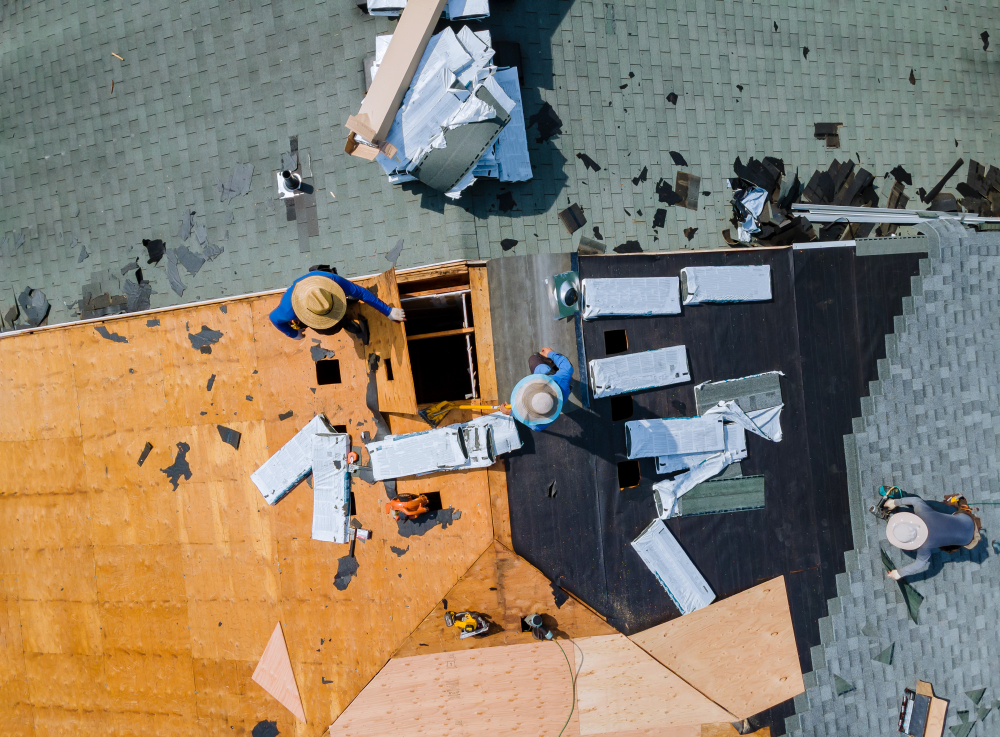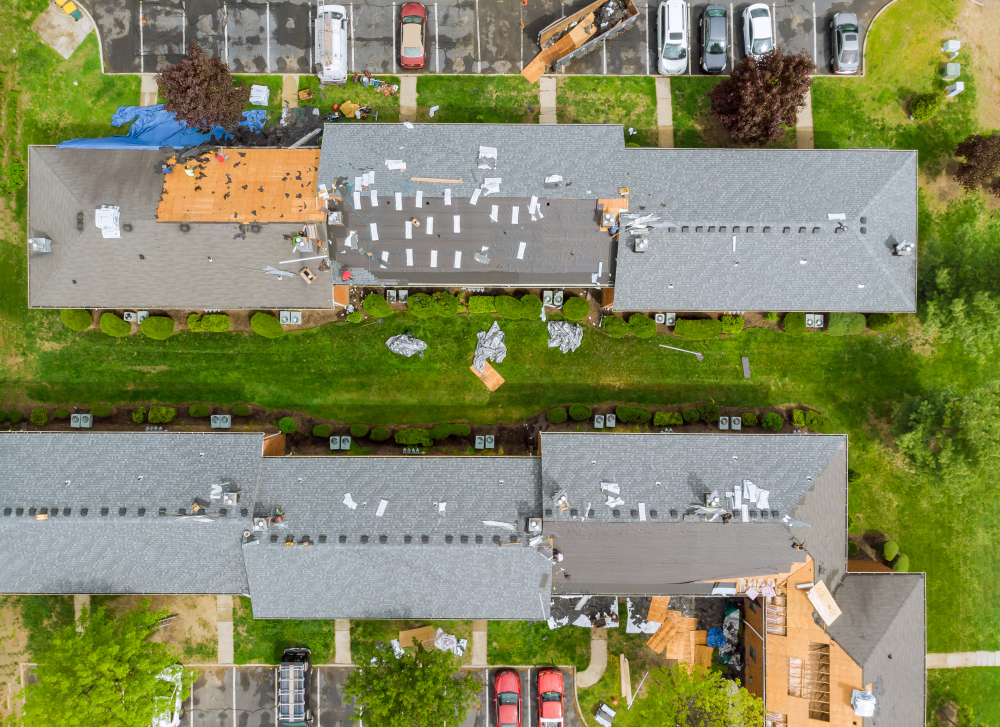Last updated on
Your roof is among the most crucial components of your home, protecting you and your family from the elements. However, even the sturdiest roofs have a limited lifespan, and you may need to replace them eventually. Undertaking a roof replacement project can be challenging, but with careful approach and preparation, you can ensure a smooth process and a long-lasting roof.
This step-by-step guide provides tips on everything you need to know and do when planning your roof replacement. Read on!
Find a Reputable Contractor

Securing a reputable and experienced roofing contractor is vital for a successful roof replacement project. Start by soliciting recommendations from trusted sources like friends, relatives, or neighbors who have replaced their roofs recently.
Additionally, thoroughly research online reviews to gauge a contractor’s reputation. For instance, if you reside in Milwaukee, searching for ‘roof replacement Milwaukee‘ online can provide valuable insights that’ll help you shortlist qualified contractors in your area.
For instance, your neighbor might recommend a contractor who replaced their roof five years ago, and the work is still holding up exceptionally well. Conversely, online reviews may reveal a contractor with a history of using low-quality materials or failing to address post-installation issues promptly.
Once you have a few potential candidates, verify their licensing and insurance credentials to ensure compliance with local regulations—request references from their previous clients for firsthand insights into their quality and professionalism.
While cost is undoubtedly a factor, avoid making your decision solely depending on the lowest quote. Instead, prioritize the quality of materials, artistry, and the contractor’s reliability. A seemingly inexpensive option may result in subpar work or the need for premature repairs, costing you more in the long run.
Determine the Need for Replacement
Before enlisting the contractors, determine the need for the roof replacement. Some minor damages could only require a quick DIY fix. For instance, you could easily clean debris or remove leaves from the roof by yourself. However, significant damages require professional help.
Here are some signs that indicate your roof requires a complete replacement:
- Structural integrity concerns: If you notice any sagging or unevenness in your roof’s appearance, it’s crucial to have it evaluated promptly. Conduct a thorough inspection as these could mean underlying structural issues. Such problems require immediate attention from a professional.
- Visible deterioration: Look for missing, cracked, or curled shingles, as these can result in leaks and further damage. Additionally, keep an eye out for granule loss, which can indicate that the shingles are wearing out.
- Interior warning signs: Inspect your attic and ceilings for signs of water stains or dampness, which could indicate a compromised roof system. For example, if you notice a water stain on your ceiling after a heavy rainstorm, it might be a sign that your roof is leaking.
- Age of the roof: Most roofs last for about 20 to 30 years, depending on the material used. If your roof is approaching the end of its expected lifespan, it’s time to consider a replacement.
By being attentive to these signs, you can proactively address the need for a roof replacement to ensure continued protection and integrity of your home.
Choose the Right Material

There are various options for roofing materials available in the market today. Each type has its set of advantages and trade-offs in terms of cost, longevity, and aesthetic appeal. Some of the most common choices include metal roofing, asphalt shingles, clay or concrete tiles, and wood shakes.
It’s crucial to consider factors specific to your situation to make an informed decision. For instance, if you reside in a region prone to harsh weather conditions, choose a durable material such as metal roofing. On the contrary, if you prioritize a traditional, rustic look, wood shakes could be an appealing option.
Additionally, the architectural style of your home should play a role in your material selection. For example, a contemporary home with clean lines might benefit from the sleek appearance of metal roofing. On the contrary, you could complement a Spanish-style residence with the warmth of clay tiles.
It’s also vital to consider your budget constraints when choosing roofing materials. While materials like clay tiles or metal roofing offer superior longevity, they often come with a higher upfront cost than economical options like asphalt shingles. Evaluate these factors and conduct thorough research on the pros and cons of each material to make a decision that aligns with your needs, and budget constraints.
Get a Detailed Estimate
After selecting a reputable roofing contractor, it’s crucial to request a detailed estimate that outlines the entire project’s scope. This estimate should encompass the specific materials you intend to use, a projected timeline for completion, and the total cost. Additionally, it should account for necessary permits required by your local authorities and the proper disposal and cleanup of the old roofing materials.
For instance, if you want to install a high-end metal roofing system, the estimate should itemize the cost of the metal panels, underlayment, fasteners, and the specialized tools or equipment required for the installation. It should also specify the timeline for the project, factoring in potential weather delays or unforeseen circumstances.
Furthermore, document the agreed-upon terms, warranties, and costs in writing before proceeding with the project. This written contract serves as a safeguard, ensuring that both parties are on the same page. It also prevents misunderstandings or disputes in the future.
Schedule the Repair
After finalizing your contractor selection and securing the required permits, the next step is to schedule the roof replacement. Collaborate with the contractor to identify the optimal timeframe for the project.
Consider the weather patterns and potential disruptions to your daily routine. Note that the work could last from a few days to over a week, depending on your home’s size and the project’s complexity.
For instance, if you have a young child who naps during the day, you might prefer scheduling the repair when it’s less likely to disturb their sleep. Alternatively, if you work from home, choose a time when you’re away on vacation to minimize the impact on your work. Planning with these factors in mind helps ensure the repair goes smoothly with minimal inconvenience.
Inspect the Work
Once the roof replacement is complete, it’s crucial to conduct a thorough inspection of the work alongside your contractor. Verify that every aspect of the project aligns with the initial agreement, from the materials used to the craft itself. Additionally, ensure that the contractors cleaned the site properly and restored it to its original condition.
If any concerns or discrepancies arise during the inspection, address them promptly with your contractor. Open communication and resolving any issues at this stage are essential to ensuring your complete satisfaction with the outcome.
For instance, if you notice that a particular area of the roof appears uneven or some debris remains, bring it to the contractor’s attention immediately. A reputable professional should be willing to rectify deficiencies or oversights without hesitation.
Maintain Your New Roof
Implementing a proactive roof maintenance routine can extend the lifespan of your newly installed roof. Conduct regular inspections, especially in the aftermath of severe weather events, to identify and address minor issues before they escalate into significant concerns. This preventative technique can save you from costly repairs or premature replacements down the line.
For instance, after a harsh winter with heavy snowfall, it’s wise to inspect your roof for signs of stress or damage from the accumulated snow. Addressing potential issues at this stage could prevent further deterioration and ensure the continued integrity of your roofing system.
Additionally, simple tasks such as keeping gutters clear of debris and removing leaves from the roof surface can reduce the risk of damage. Trimming overhanging branches can mitigate the risk of falling limbs, compromising the integrity of your roof during severe storms. This ensures longevity and maintains the overall functionality of your roofing system.
The Takeaway
Replacing your roof is a significant undertaking, but with proper planning and execution, you can streamline the process. By following the guidance outlined in this step-by-step guide, you can approach your roof replacement project with confidence.
Remember, taking the time to plan meticulously, choose suitable materials and contractors, and maintain your roof will ensure a successful outcome, providing your home with lasting protection and peace of mind for years to come.
Table of Contents




